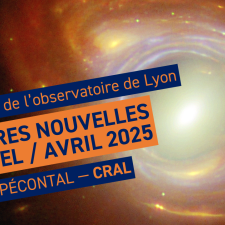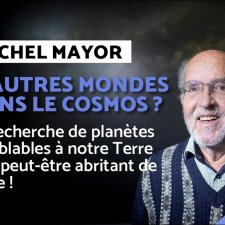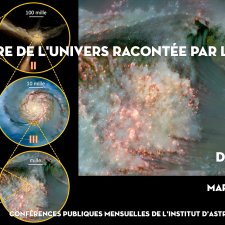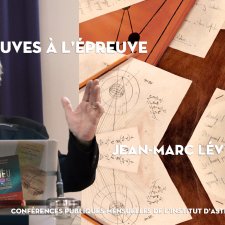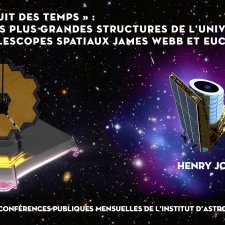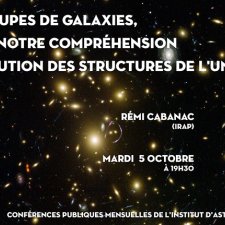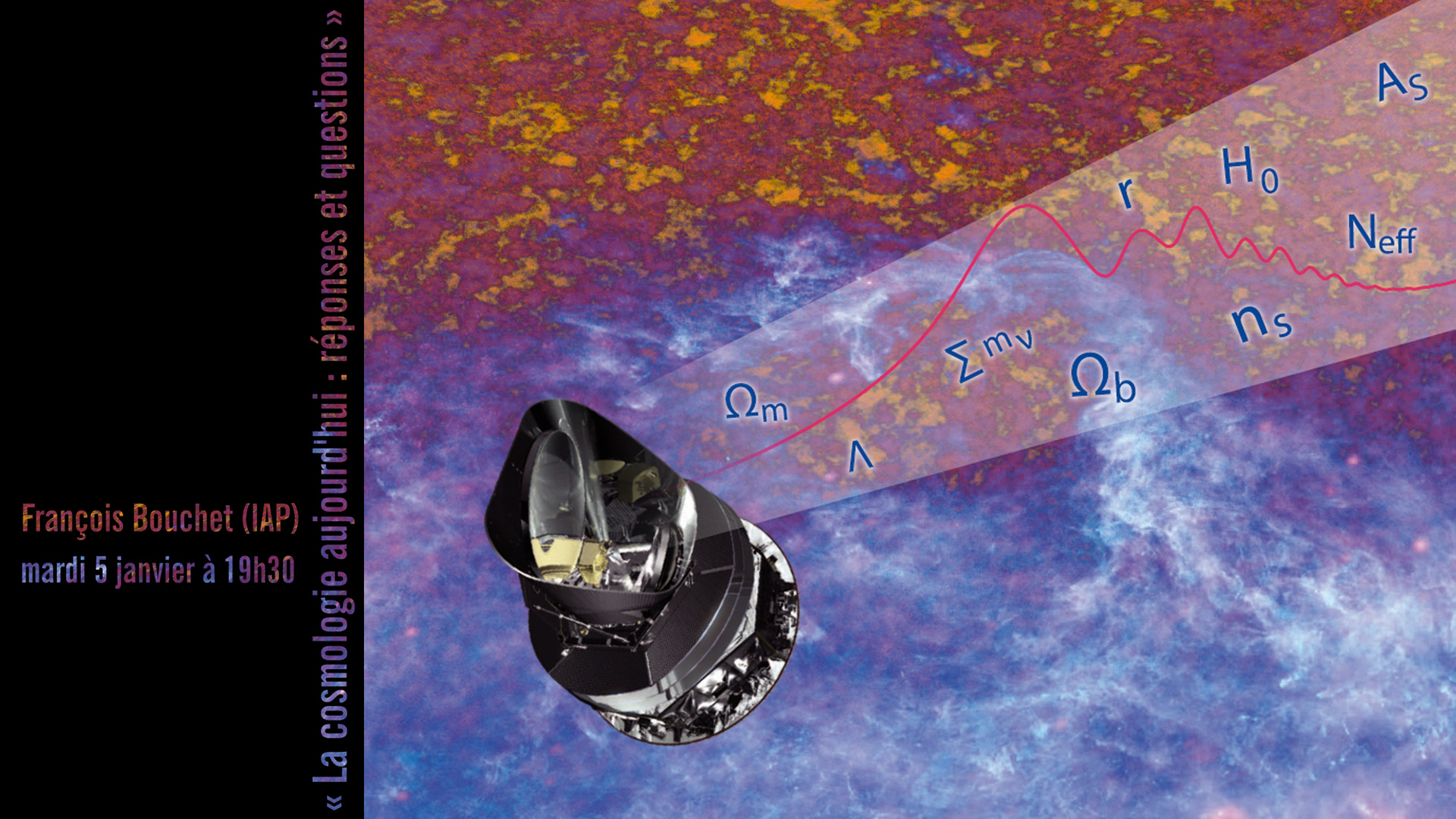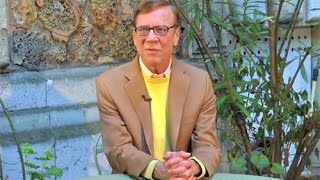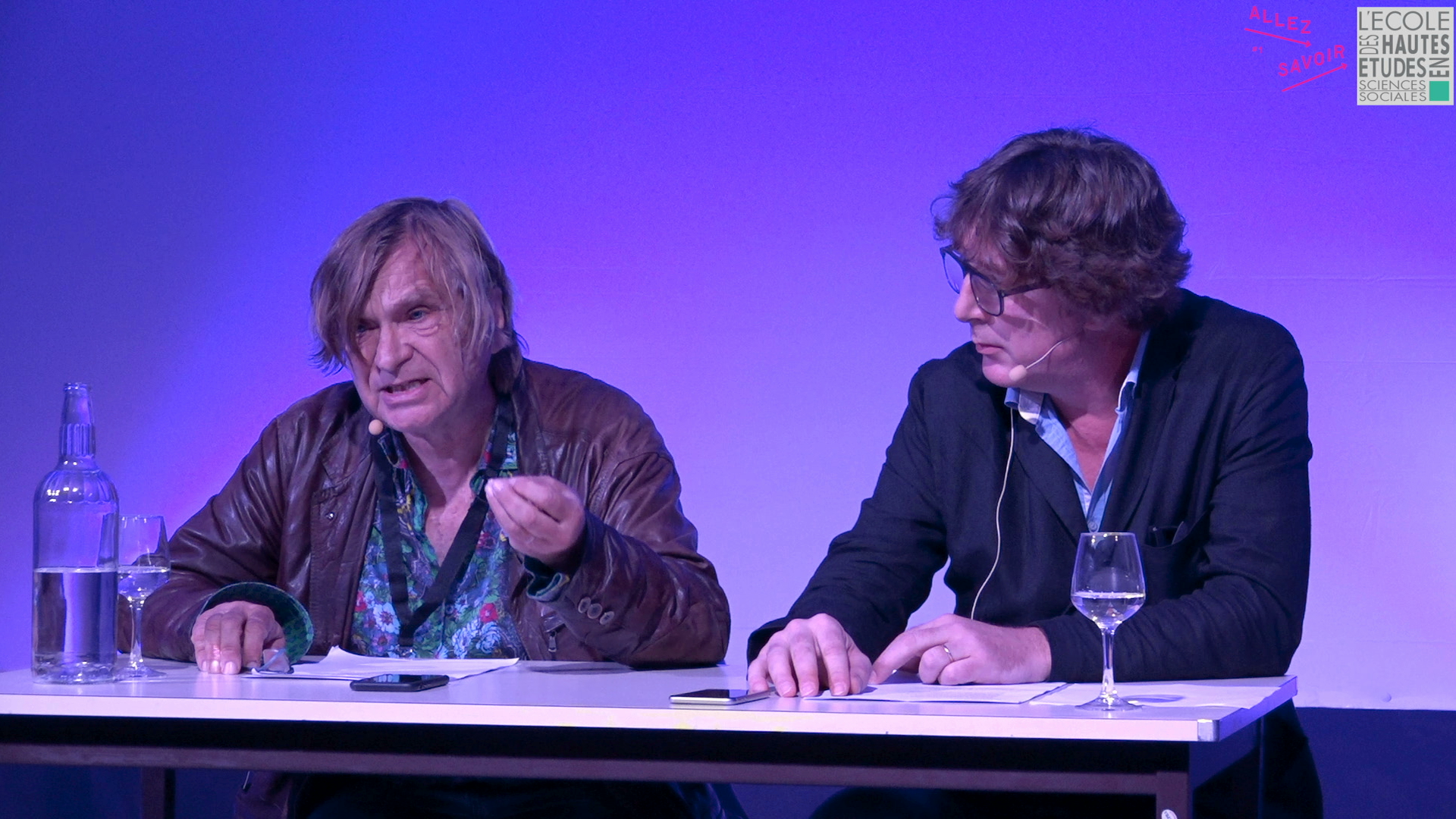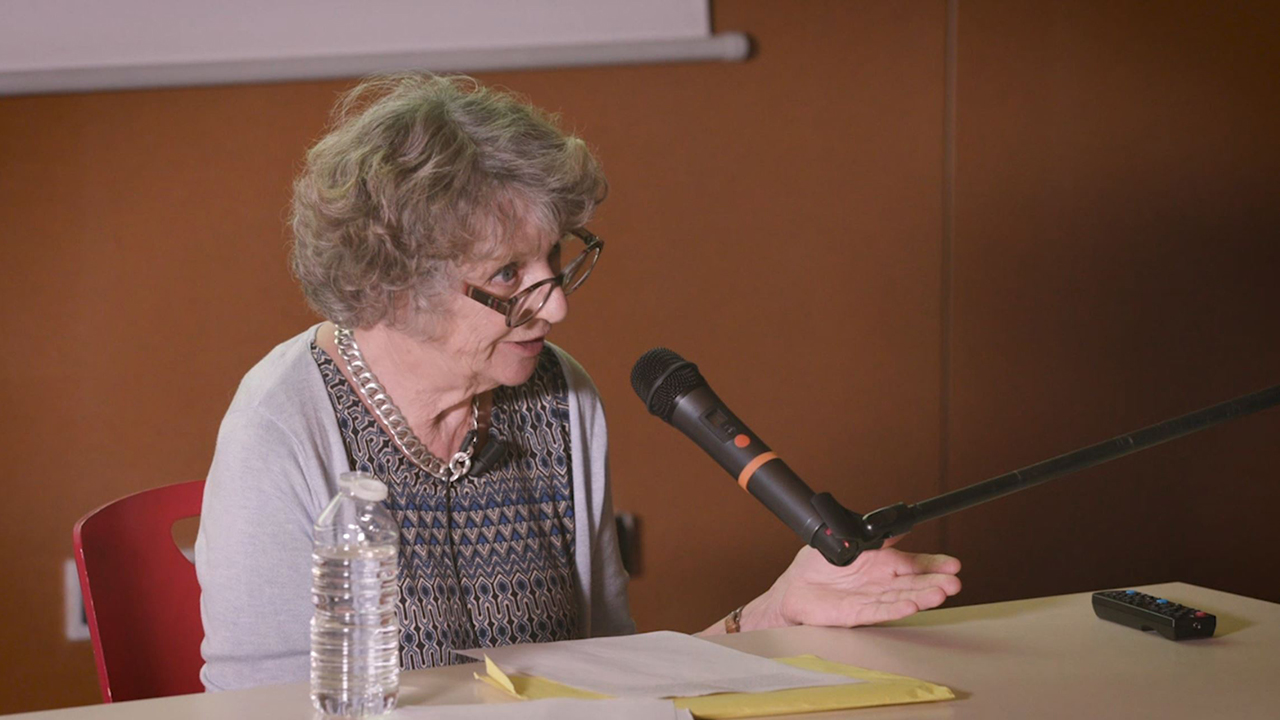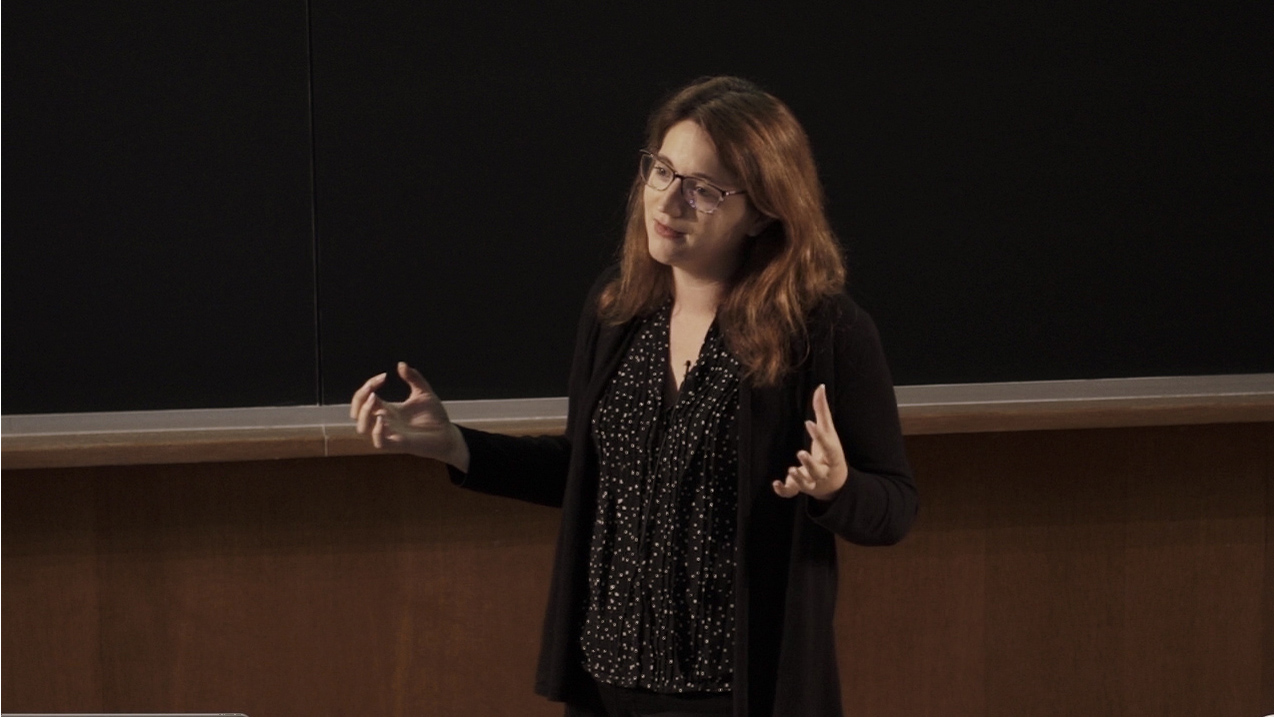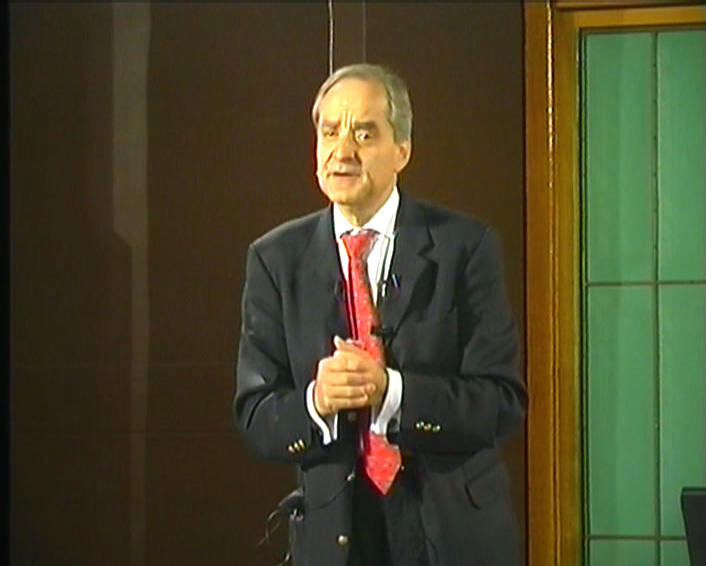Notice
Les premiers photons : les saisir, les faire parler
- document 1 document 2 document 3
- niveau 1 niveau 2 niveau 3
Descriptif
La collaboration « Planck » de l’Agence Spatiale Européenne a récemment publié une carte plein-ciel du rayonnement fossile cosmologique. Cette image est presque littéralement une « photo instantanée » de notre Univers aux premiers temps de sa formation, la plus vieille image du monde. Elle confirme avec éclat et approfondit la théorie du Big Bang, notre meilleur scénario pour l’origine et la formation de l’Univers.
Dans cet exposé, je rappellerai les grandes lignes de la théorie du Big Bang, décrirai le satellite Planck et le traitement des données qui ont permis de cartographier l’Univers primordial avec une merveilleuse précision. Puis, j’expliquerai comment « des données, on extrait la Science », c’est-à-dire comment la statistique fait parler cette image des premiers photons pour en tirer l’âge de l’Univers, son contenu en masse et énergie, et bien d’autres choses…
Intervention / Responsable scientifique
Thème
Documentation
Documents pédagogiques
Références:
- [1] P Armitage and Doll. The age distribution of cancer and a multi-stage theory of carcinogenesis. Br J Cancer, 8(1) :1–12, 1954.
- [2] S H Moolgavkar, N E Day, and R G Stevens. Two-stage model for carcinogenesis : Epidemiology of breast cancer in females. Journal of the National Cancer Institute, 65 :559–569, 1980.
- [3] M. C. Pike, M. D. Krailo, B. E. Henderson, J. T. Casagrande, and D. G. Hoel. ’hormonal’ risk factors, ’breast tissue age’ and the age-incidence of breast cancer. Nature, 303(5920) :767–770, 1983.
- [4] E B Claus, N Risch, and W D Thompson. The calculation of breast cancer risk for women with a first degree family history of ovarian cancer. Breast cancer research and treatment, 28 :115–120, Nov 1993.
- [5] M H Gail and J Benichou. Validation studies on a model for breast cancer risk. Journal of the National Cancer Institute, 86 :573–575, Apr 1994.
- [6] G Plu-Bureau, M G Lê, R Sitruk-Ware, J C Thalabard, and P Mauvais-Jarvis. Progestogen use and decreased risk of breast cancer in a cohort study of premenopausal women with benign breast disease. British journal of cancer, 70 :270–277, 1994.
- [7] Eiliv Lund and Vanessa Dumeaux. Systems epidemiology in cancer. Cancer epidemiology, biomarkers & prevention, 17 :2954–2957, 2008.
- [8] Eiliv Lund, Vanessa Dumeaux, Tonje Braaten, Anette Hjartåker, Dagrun Engeset, Guri Skeie, and Merethe Kumle. Cohort profile : The norwegian women and cancer study–nowac–kvinner og kreft. International journal of epidemiology, 37 :36–41, 2008.
- [9] Marco Gerlinger, Andrew J Rowan, Stuart Horswell, James Larkin, David Endesfelder, Eva Gronroos, Pierre Martinez, Nicholas Matthews, Aengus Stewart, Patrick Tarpey, Ignacio Varela, Benjamin Phillimore, Sharmin Begum, Neil Q McDonald, Adam Butler, David Jones, Keiran Raine, Calli Latimer, Claudio R Santos, Mahrokh Nohadani, Aron C Eklund, Bradley Spencer-Dene, Graham Clark, Lisa Pickering, Gordon Stamp, Martin Gore, Zoltan Szallasi, Julian Downward, P Andrew Futreal, and Charles Swanton. Intratumor heterogeneity and branched evolution revealed by multiregion sequencing. The New England journal of medicine, 366 :883–892, Mar 2012.
- [10] Eiliv Lund, Nicolle Mode, Marit Waaseth, and Jean-Christophe Thalabard. Overdiagnosis of breast cancer in the norwegian breast cancer screening program estimated by the norwegian women and cancer cohort study. BMC cancer, 13 :614, 2013.
- [11] Mary-Claire King. « the race » to clone brca1. Science, 343 :1462–1465, 2014.
- [12] Vanessa Dumeaux, Josie Ursini-Siegel, Arnar Flatberg, Hans E Fjosne, Jan-Ole Frantzen, Marit Muri Holmen, Enno Rodegerdts, Ellen Schlichting, and Eiliv Lund. Peripheral blood cells inform on the presence of breast cancer : a population-based case-control study. International journal of cancer, 136 :656–667, 2015.
- [13] Eiliv Lund, Lars Holden, Hege Bøvelstad, Sandra Plancade, Nicolle Mode, Clara-Cecilie Günther, Gregory Nuel, Jean-Christophe Thalabard, and Marit Holden. A new statistical method for curve group analysis of longitudinal gene expression data illustrated for breast cancer in the nowac postgenome cohort as a proof of principle. BMC medical research methodology, 16 :28, 2016.
- [14] NE Breslow and NE Day. Statistical Methods in Cancer Research Volume II – The Design and Analysis of Cohort Studies, volume II of IARC Scientific Publications No 82. IARC, 1987.
- [15] NE Breslow and NE Day. Statistical Methods in Cancer Research. Volume I :The analysis of case- control studies, volume I of IARC Scientific Publications No. 32. IARC, 1980.
Sur le même thème
-
Actualités astronomiques d'avril 2025
PécontalEmmanuelFin de la mission Gaia ; résultat de DESI sur la constante cosmologique ; anneau d'Einstein et observation directe d'exoplanètes : les actualités astronomiques d'avril 2025.
-
-
L'HISTOIRE DE L'UNIVERS RACONTÉE PAR LA LUMIÈRE
ElbazDavidEn 1905, Albert Einstein découvre que l'énergie possède la faculté de s'égrener comme le sable d'un sablier. Il ne le sait pas encore, mais les découvertes des premières étoiles et galaxies, des
-
DIEU : LES PREUVES À L'ÉPREUVE
Lévy-LeblondJean-MarcSpéculant sur la cosmologie moderne, un livre récent ravive le vieux débat sur la possibilité de démontrer scientifiquement l'existence de Dieu. En remontant d'abord aux meilleures sources, de Saint
-
DANS “LA NUIT DES TEMPS” : DÉVOILER LES PLUS GRANDES STRUCTURES DE L'UNIVERS PRIMITIF
McCrackenHenry JoyAu cours des dernières décennies, l'analyse des « champs profonds » successifs nous a donné un aperçu fascinant de l'Univers lointain. Cependant, la plupart de ces champs profonds ne couvrent au mieux
-
NOTRE COMPRÉHENSION DE L'ÉVOLUTION DES STRUCTURES DE L'UNIVERS
CabanacRémiL’Institut d’astrophysique de Paris se met au direct ! La 18e conférence « à distance » aura lieu mardi 5 octobre 2021 à 19h30, et sera donnée par Rémi Cabanac (IRAP).
-
LA COSMOLOGIE AUJOURD'HUI : RÉPONSES ET QUESTIONS
BouchetFrançoisL'astrophysique est incroyablement prolixe en découvertes extraordinaires qui renouvellent notre vision du monde, de la découverte de multiples exoplanètes aux propriétés inattendues, l'ouverture d
-
Jean François Maillard, directeur de recherche émérite (IRHT, section de l'humanisme)
1. Qui êtes-vous? 2. Quels sont vos centres d’intérêts? 3. Quel est le sujet de vos recherches? 4. Sur quels thèmes travaille-t-on à l’Institut de recherche et d’histoire des textes (IRHT)? 5.
-
Homère et la nature - Festival ALLEZ SAVOIR
Judet de La CombePierreBoutierJeanBatallaMichaëlIl n'y a pas de mot pour la nature chez Homère.
-
Manières amazoniennes d’habiter la forêt
TaylorAnne-ChristineDes recherches récentes montrent que la forêt amazonienne, réputée vierge, faiblement peuplée et hostile au développement de sociétés complexes, est en réalité le produit d’un procès de néolithisation
-
COMMENT SE TISSE LA TOILE COSMIQUE ?
Codis-DecaraSandrineLes galaxies ne voguent pas de façon désordonnée dans l'Univers. Elles forment un véritable réseau en bulles de savon souvent appelé toile cosmique et composé de vides, de murs, de filaments et de
-
Les observations en astrophysique (2001)
BrahicAndréLa fin du XX ème siècle a vu l'explosion des connaissances en astrophysique. Ce bouleversement a totalement changé nos connaissances à tel point qu'il manque à l'heure actuelle d'un recul suffisant



